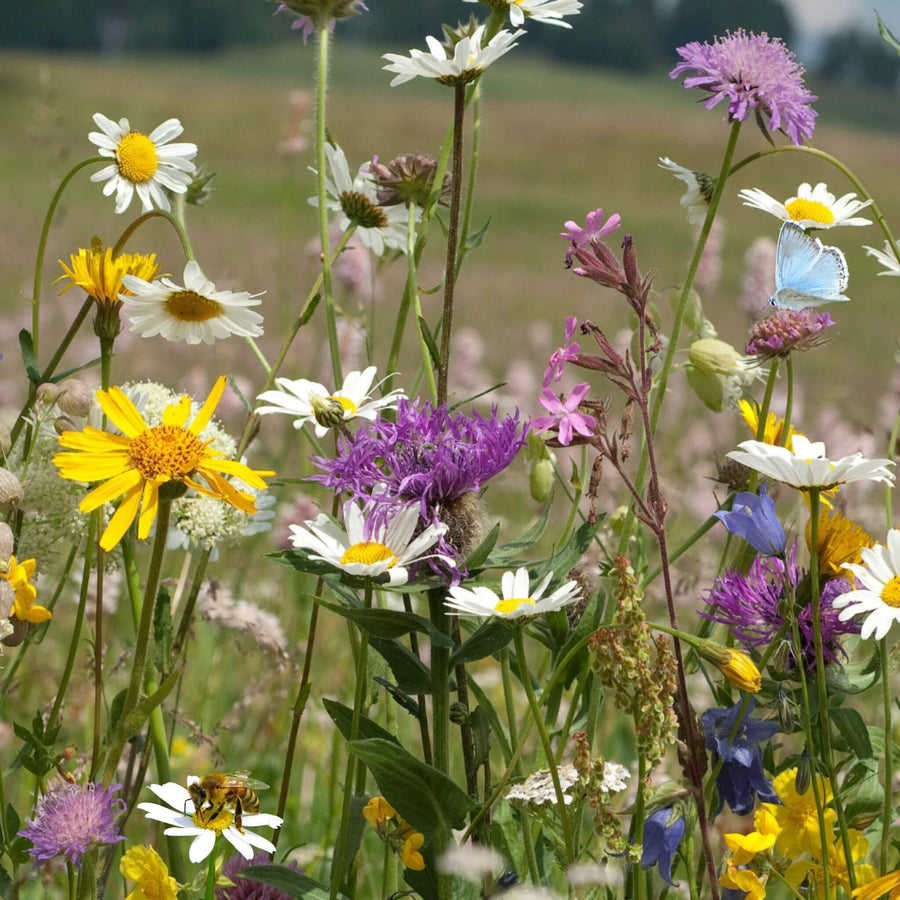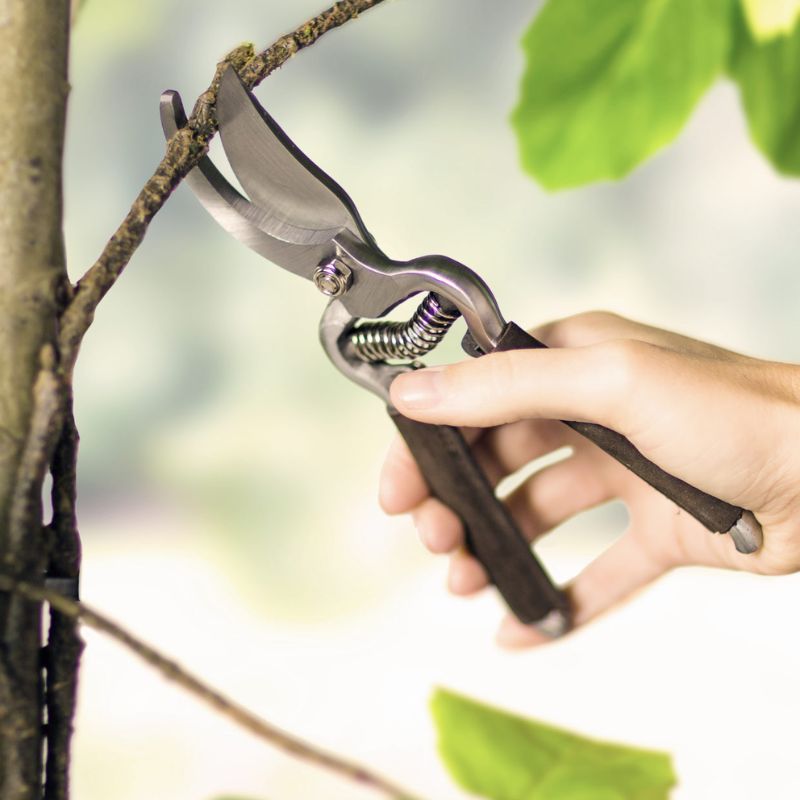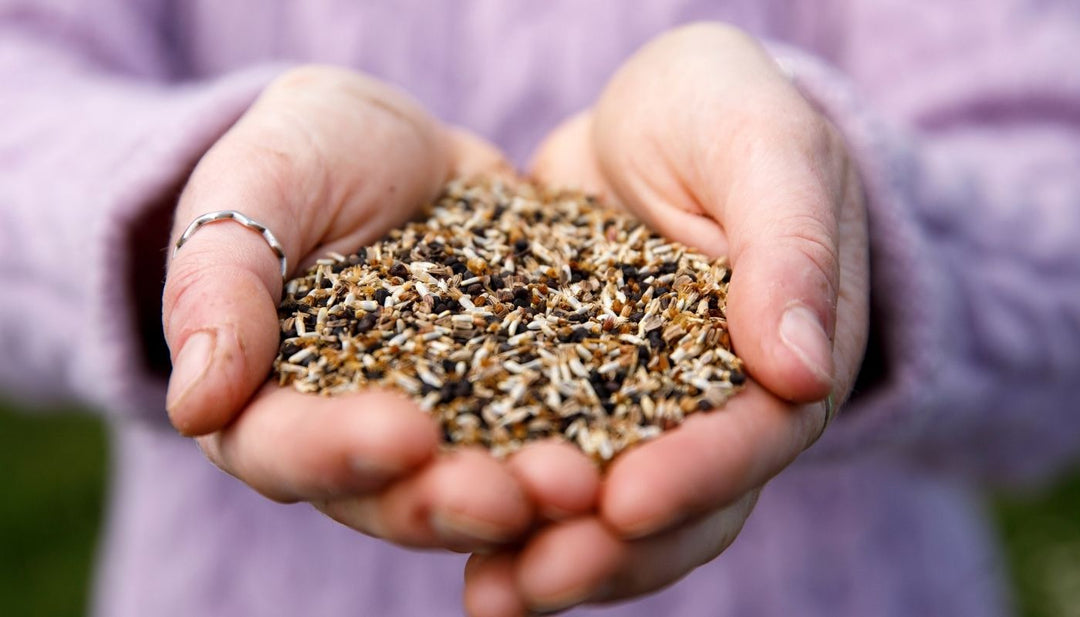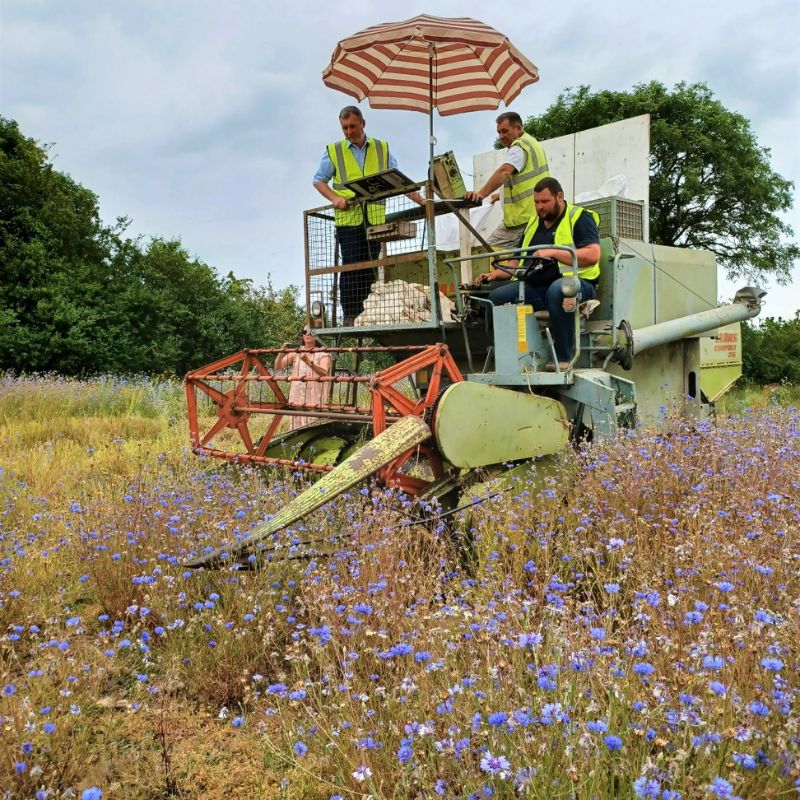The Honey Bee Waggle Dance
It's a nice day, warm and bright. During a quick stroll around the garden, you notice a loud humming coming from a particular patch of flowers or maybe from a fruit tree. Upon closer inspection, you see that it is full of honey bees collecting nectar and pollen, busily getting the work done while the weather is good.
While this is a common sight in gardens around the country every day during the spring, summer and autumn, have you ever wondered how the bees know how to find your little patch of nectar-rich goodness or when to utilise it and why they chose this particular area?
The method of discovery which the honey bee species use when collecting food supplies is not quite as simple as 'fly around and hope for the best'! It is a targeted campaign of discovery involving planning, testing and reporting by many bees within the hive, and it begins in the early morning each day.
Early in the morning, when the day has begun to warm up, 'scout' bees leave the hive in all directions, searching for good foraging locations for the day. These bees will travel up to 2.5km in their quest before finding a suitable location. Once found, they collect a sample of pollen or nectar and return to the hive.
It is what happens next, which is the real beauty of their discovery method. The scout bee needs to recruit forager bees in the hive to take advantage of this discovery. To do this, she (all worker honey bees are females) will perform a dance that helps to inform other bees where the nectar-rich food source she has discovered is located. This dance is performed on the vertical surface of the hive while other worker bees observe in a circle around her.
The dance will vary depending on the distance and direction of the food. If the source is close by, she will do a circular dance only. This indicates that the source is within 200m of the hive and that it is just a matter of the foragers, or worker bee, locating it for themselves. If the nectar-rich food source is located further afield, the bee will change her dance to the so called 'Waggle Dance'!
The waggle dance can let the observing worker bees know what direction the food source is and how far it is necessary to fly to find it. To entice the observers to travel to this location, the scout will deposit a sample of nectar collected to let them know its quality.
The dance is performed by the bee running and 'waggling' in a straight line, then circling back to the beginning and starting again. The straight line indicates the direction of travel the worker bees need to head, while the circle's speed tells observers how far to travel – a quick circle back lets them know it is close, and a longer one that the distance is further.
If the food is in a direction forward of the beehive, then the dance will be performed up the honeycomb. If the food source is behind the hive, the dance is performed down the honeycomb. The angle at which the dance is performed tells the forager which direction to travel in relation to the sun – essentially 'head out the front door keep the sun to your left'. If the bee is wildly enthusiastic about a location, she will 'waggle' more rapidly to convey her excitement about the find.
If the information is judged to be good, then a cohort of bees will head out to investigate and forage for pollen and nectar. These bees may also perform a waggle dance when they next return to the hive. Many foragers will soon take up a good location within the swarm. Scouts and worker bees will be reporting throughout the day on different places they have found. Some areas will be favoured over others by the foragers and may be chosen through multiple reports from the same direction.
It has been observed that if multiple bees perform a waggle dance, it becomes a competition to convince the observing worker bees. Sometimes the competition gets so heated that competing bees may disrupt or even fight each other in their attempt to convince the other bees in the hive of the value of their discovery.
The waggle dance appears to be behaviour specific to the various species of the honey bee. It has not been seen in other species of bees, such as the Bumblebee or solitary bees or other insects. There are just 8 species of honey bee known worldwide, and each species has a slightly different variation on the dance. The Italian honey bee, Apis mellifera ligustica, has three different versions of the dance depending on the distance from the hive.
Other species such as the Asian wild bee, Apis andreniformis, perform the dance outside the hive above the entrance.
Experiments in 2008 have even shown that different species of Asian honey bees and European honey bees understood each other's waggle dance 'dialects'. It is thought that the waggle dance may have been a behaviour that evolved from a shared common bee ancestry in ancient times, possibly from the appearance of the first honey bee species in the early Eocene period - over 39 million years ago!
Our own native honey bee species, the Northern dark be or Apis mellifera mellifera, dance much as described above.
While the swarm may favour any high nectar or pollen concentration, multiple sources from different plants and in the same area appear to be especially favourable. This may be due to an assortment of nectar and pollen types being preferred over one single type. While bees tend to collect pollen or nectar from one plant species per foraging trip, other bees from the same hive will begin to collect from a different source if a particular plant type is currently being harvested.
This is why it is essential to create a varied supply of plants, such as a variety of wildflower species, for bees to feed on rather than a monoculture of all the same type of flower. It helps many honey bee and wild bee species to find a wide variety of pollen and nectar, as well as encouraging them to visit your garden to feed on these beautiful garden and wildflowers.
If you have provided a suitable platter for these hard-working bees, then it is likely that your garden will be the focus of a honey bees waggle dance in a hive at some stage during the summer.
Enjoy the waggle dance!














